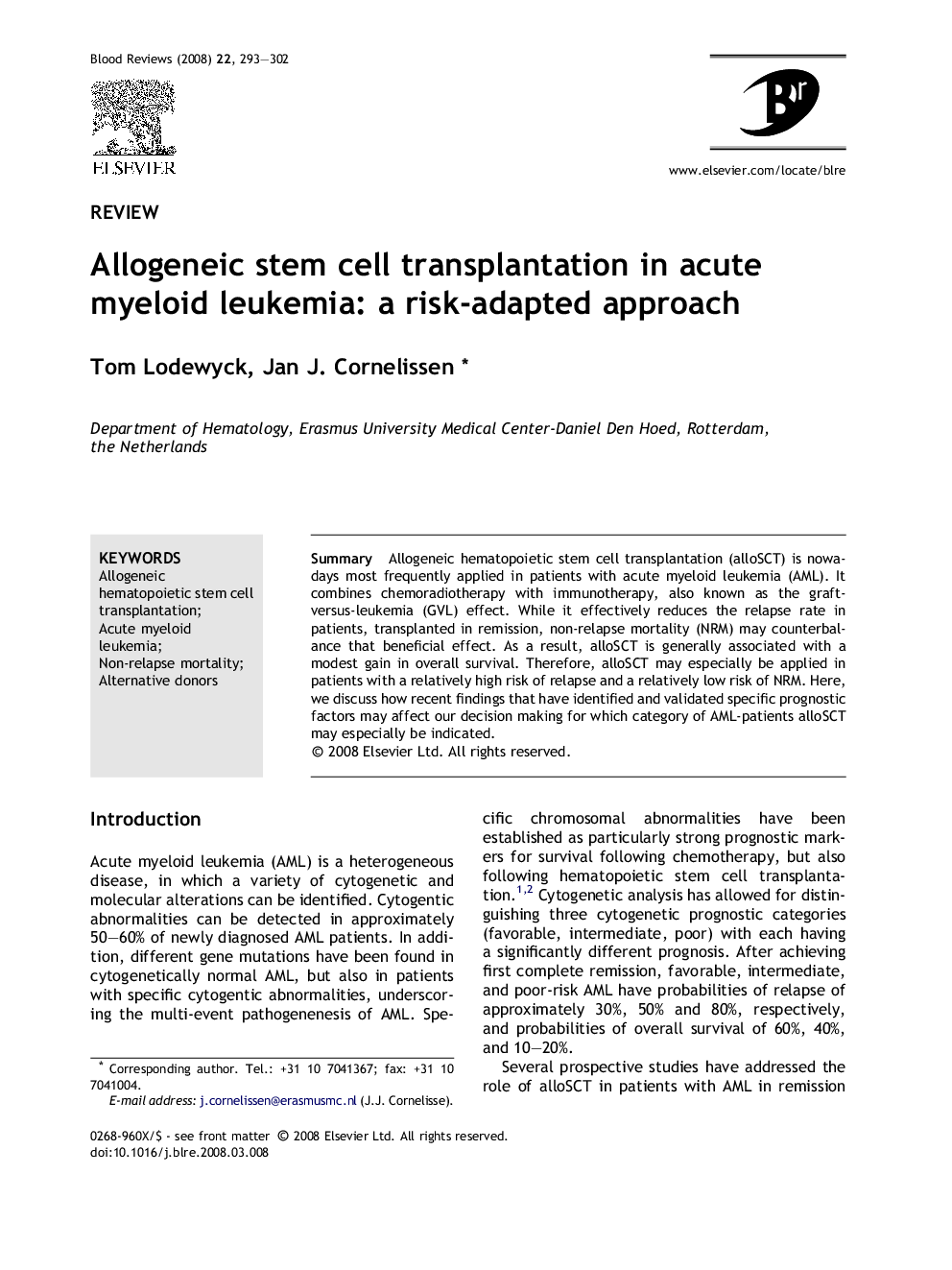| کد مقاله | کد نشریه | سال انتشار | مقاله انگلیسی | نسخه تمام متن |
|---|---|---|---|---|
| 2106284 | 1083499 | 2008 | 10 صفحه PDF | دانلود رایگان |

SummaryAllogeneic hematopoietic stem cell transplantation (alloSCT) is nowadays most frequently applied in patients with acute myeloid leukemia (AML). It combines chemoradiotherapy with immunotherapy, also known as the graft-versus-leukemia (GVL) effect. While it effectively reduces the relapse rate in patients, transplanted in remission, non-relapse mortality (NRM) may counterbalance that beneficial effect. As a result, alloSCT is generally associated with a modest gain in overall survival. Therefore, alloSCT may especially be applied in patients with a relatively high risk of relapse and a relatively low risk of NRM. Here, we discuss how recent findings that have identified and validated specific prognostic factors may affect our decision making for which category of AML-patients alloSCT may especially be indicated.
Journal: Blood Reviews - Volume 22, Issue 6, November 2008, Pages 293–302